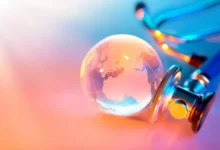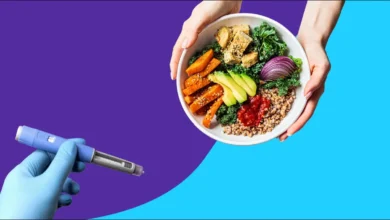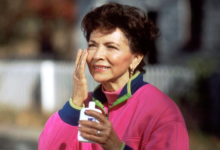How Remote Monitoring Enhances Elderly Support and Care

Technology that allows for remote monitoring is revolutionizing senior healthcare. Remote monitoring dramatically raises the standard of care for elderly patients by utilizing cutting-edge equipment and systems to offer ongoing supervision and prompt interventions, which is far more convenient. This article examines the five major ways that remote monitoring improves care and assistance for the elderly.
1. Continuous Health Monitoring
Healthcare professionals are able to identify any irregularities early on and respond quickly, thanks to this ongoing supervision. This proactive strategy can enhance overall health outcomes and reduce problems for elderly adults with chronic illnesses. Furthermore, by ensuring that any modifications are founded on the most recent data, continuous health monitoring can assist medical professionals in more accurately customizing therapies to meet the needs of each patient. This degree of individualized treatment can improve chronic illness management considerably and lower the likelihood of severe episodes that necessitate hospitalization. In the end, older people benefit from the continued attention that remote monitoring provides in terms of improved long-term health and stability, which raises their quality of life.
2. Emergency Response
Facilities for emergency reactions are frequently included in remote patient monitoring services. When a fall or other emergency occurs, seniors can push a button to notify caretakers or medical professionals promptly. Giving seniors and their families peace of mind and lowering the possibility of severe injuries is possible when prompt information is given. Not only that, but even in cases when a senior is incapable of pressing a button, remote monitoring systems may recognize unnatural patterns in their vital signs or activities and send notifications to emergency services or caretakers. It is possible to intervene quickly in life-threatening circumstances thanks to this proactive strategy. Remote monitoring systems encourage independence and safety in older citizens, allowing them to age in place with assurance and security by giving them access to rapid help and support.
3. Medication Management
Elderly people can have their medication intake monitored remotely and be notified to take their medications on schedule. Remote monitoring contributes to the maintenance of treatment plans’ efficacy and the avoidance of health deterioration by guaranteeing appropriate drug administration. In addition, in the event that a drug is missing or taken improperly, remote monitoring systems can instantly notify caretakers or medical professionals, enabling prompt action. By taking a proactive stance towards medication management, seniors can benefit fully from their recommended therapies and lower their chance of prescription mistakes. In the end, remote monitoring improves health outcomes by helping older adults follow their prescription schedules and lowering their chance of developing chronic illness-related problems.
4. Enhanced Communication
Improved communication between elders, caregivers, and healthcare professionals is made possible via remote monitoring. Everyone is kept updated about the senior’s health state through frequent updates and alarms. Seniors will receive the greatest assistance possible thanks to the quick interventions and care plan modifications made possible by this seamless communication. Furthermore, older citizens and their healthcare practitioners can communicate directly through the use of video conferencing and texting capabilities included in many remote monitoring platforms, negating the necessity for in-person visits. Seniors feel more connected and collaborative as a result of this improved communication, which gives them more influence over their healthcare choices. Remote monitoring enhances overall care coordination and supports a patient-centered approach to ageing in place by providing clear and effective communication channels.
5. Cost-Effective Care
Remote monitoring can reduce the need for periodic trips to hospitals and nursing homes, which can save healthcare costs. Remote monitoring lowers medical costs by managing chronic illnesses more skillfully and averting health problems. The healthcare systems and older citizens both gain from this economical strategy. Furthermore, early identification of health problems by remote monitoring enables prompt actions that can avert expensive hospital stays or ER visits. Remote monitoring helps people and healthcare systems save money over the long run by encouraging proactive treatment of chronic illnesses and preventative care. In the end, seniors’ overall quality of life is raised while the affordable nature of remote monitoring supports sustainable healthcare delivery.
Conclusion:
Lastly, it should be mentioned that remote monitoring is crucial to enhancing senior citizen care and support. Remote monitoring enhances elders’ quality of life by offering round-the-clock health monitoring, emergency response, prescription administration, and individualized care. It also provides an affordable way to manage health, fosters independence, and improves communication. As technology advances, it is expected that the utilization of remote monitoring in eldercare will become more and more important.







